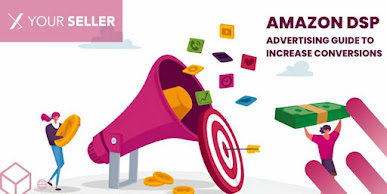In the fast-paced world of e-commerce, mastering Amazon SEO is crucial for staying ahead of the competition. As the largest online marketplace, Amazon presents a vast opportunity for sellers to reach millions of potential customers. However, with millions of products vying for attention, standing out from the crowd can be challenging. This is where machine learning comes into play.
Understanding Amazon SEO Services
Before delving into how machine learning can enhance Amazon SEO, let's first grasp the basics of Amazon SEO services. Amazon's search algorithm is designed to prioritize products that are most relevant to a customer's search query. Factors such as product titles, descriptions, images, and customer reviews all play a role in determining a product's ranking on Amazon's search results page.
The Power of Machine Learning in Amazon SEO
Machine learning algorithms have the capability to analyze vast amounts of data and identify patterns that humans may overlook. By leveraging machine learning, sellers can gain valuable insights into customer behavior, trends, and preferences, allowing them to optimize their product listings for maximum visibility and sales.
Integrating Machine Learning into Predictive SEO Performance
One of the most powerful ways to enhance Amazon SEO with machine learning is through predictive analytics. By analyzing historical data on customer searches, purchases, and browsing behavior, machine learning algorithms can predict future trends and help sellers anticipate changes in demand.
For example, a machine learning algorithm could analyze past search trends to identify keywords that are likely to become popular in the future. Sellers can then optimize their product listings to target these keywords proactively, giving them a competitive edge over other sellers.
Optimizing Product Listings with Machine Learning Insights
In addition to predictive analytics, machine learning can also be used to optimize product listings in real-time. For instance, algorithms can analyze customer reviews to identify common themes and sentiment, allowing sellers to address any issues or concerns promptly.
Furthermore, machine learning algorithms can analyze competitors' product listings to identify gaps or areas for improvement. By benchmarking their listings against competitors, sellers can ensure that their products stand out in a crowded marketplace.
Conclusion:
In conclusion, leveraging machine learning to enhance Amazon SEO can provide sellers with a significant competitive advantage. By analyzing vast amounts of data and identifying patterns and trends, machine learning algorithms can help sellers optimize their product listings for maximum visibility and sales.
By integrating machine learning into predictive SEO performance, sellers can anticipate changes in demand and proactively optimize their listings to target relevant keywords. Additionally, machine learning insights can help sellers identify and address any issues or concerns raised by customers, further enhancing their reputation and credibility on the platform.
Overall, by harnessing the power of machine learning, sellers can unlock the full potential of Amazon SEO and achieve greater success in the highly competitive world of e-commerce.
Visit at: Ultimate Guide to Enhance Amazon SEO With Machine Learning






.webp)